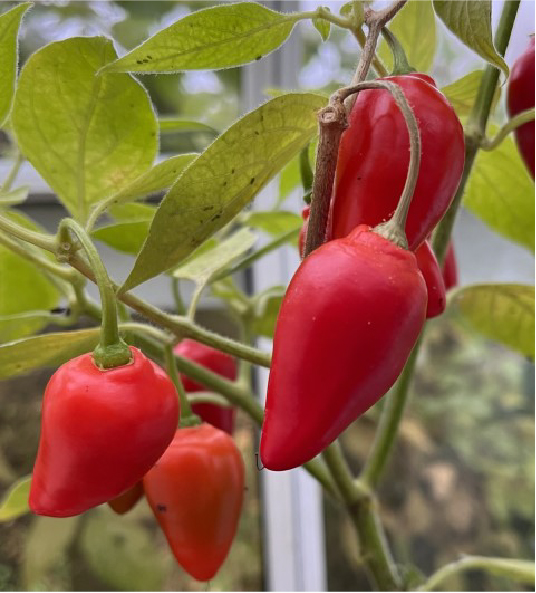From February onwards, it’s time to sprout (or ‘chit’) first and second ‘early’ potatoes.
Put your potatoes in a tray or egg box with the ‘rose’ end, where there is the greatest density of ‘eyes’ or buds, at the top, keep them at about 7C (45F), then, after four to five weeks the shoots should be about 5cm (2”) long and the potatoes ready for planting. Make sure the greenhouse is ventilated on sunny days so the new shoots become spindly.
Move them with care so the soft new shoots don’t break off and planted them out after the last frosts in your area. As a precaution, keep a few sheets of newspaper or horticultural fleece on standby and listen to the weather forecast and cover young shoots, once they have emerged from the soil, if sudden late frosts are forecast.
Plants like bell peppers, chillies and aubergines which need up to five months to mature should ideally be sown this month. Gardeners who complain later in the year, that their peppers haven’t ripened, may have sown their seed too late, though weather can be a factor of course.

The third week in February is ideal, mid-March is fine and the first week in April is the limit. They need warm, light conditions and constant temperatures, so if you are unable to provide these, buy ‘plugs’ or young plants from the garden centre or internet later in the year. (This saves space in the greenhouse, too). Water the surface of a 10cm pot of seed or multipurpose compost with a fine rose, using tepid water and leave it to drain for at least half an hour. Sow the seeds over the surface, six to a pot, then cover with a shallow layer of fine grade vermiculite. Put the pot in a propagator at 18-21C (64 -70F); they take about three weeks to germinate.
Transplant when they are large enough to handle, lifting the seedlings gently by a leaf, into a 9cm pot and grow them on in the greenhouse at 10-15C. Make sure that there is enough space between the pots so the seedlings don’t become elongated in search of the light. Once the pots are full of roots but not ‘pot bound’ they can be moved into their final growing position in a heated greenhouse in 25cm pots of growing bag compost or growing bags. If the greenhouse is unheated, sow later when the weather is warmer and don’t plant them out until May.
Sow sweet peas in a frost free, sunny greenhouse and pinch out the tips of autumn sown plants to encourage side shoots to form.
Towards the end of the month, soak dahlia tubers in a bucket of tepid water for an hour, then plant in trays of peat free compost, to encourage new shoots to form for cuttings and earlier flowering. Keep your greenhouse frost free.
Remove the flower heads of hippeastrums, but not the stems and feed once a week with liquid general fertilizer. Happy Gardening, Matt


